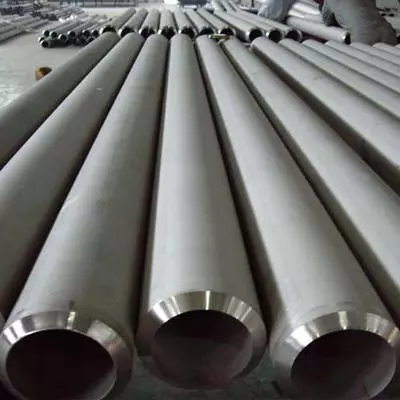An intro of the forging process of martensitic stainless steel
Martensitic stainless steel has high hardenability and can be air-cooled and hardened. Because of that, when cold forging martensitic steels, especially those with high carbon steel, it is important to take protective measures to prevent cracking. The martensitic steel should usually be covered with a heat insulating material or evenly and slowly cooled in the furnace to 593 °C. If the forging is directly sprayed with water as in the case of a cooling forging die, cracking will occur. In general, martensitic stainless steel forgings are tempered after forging to reduce the hardness of the steel and enable it to be machined.
The highest forging temperature of martensitic stainless steel is chosen to be lower than the temperature produced, otherwise, cracks may easily occur. It is usually formed at a temperature of 1093 °C to 1260 °C. Pay special attention to not exceed this temperature during the forging process, and avoid local overheating caused by rapid metal movement. Further, surface decarburization promotes the formation of ferrite, so it should also be limited.
As the chromium content increases, the ferrite formation temperature decreases, and a small amount of ferrite significantly reduces its malleability. When the ferrite is increased to more than 15%, the forgeability will gradually increase until the structure is completely transformed into ferrite. The final forging temperature is limited by the allotropic transformation (the allotropic transformation starts around 816 °C), and this steel is usually stopped at 927 °C because the molding is difficult when the temperature is too low.
Adding sulfur or antimony to the Y12Crl3 (416) steel can improve its machinability, but these elements can cause forging problems, especially when they form surface plate-type structure. However, it can be eliminated by adjusting the forging temperature and process. If sulfur is added, it is impossible to eliminate such cracking. From this point of view, it is better to add selenium.
The formation of S-ferrite should be avoided during martensite stainless steel forging heating process, because the appearance of ferrite will cause cracks in the forging. Besides, overheating of stainless steel forgings caused by excessive heat have to be avoided as well. The decarburization of the forgings during the heating process is mainly to promote the formation of ferrite, so the decarburization of the forging surface is minimized. There is no special requirement for the deformation of the last fire of martensitic stainless steel. This kind of steel is prone to cracking after forging. The reason is that martensite and carbide structure appear in air cooling after forging, and the internal stress is large. Therefore, when cooling after forging, it must be carried out slowly, usually at a sand pit or slag with 200 °C, and after the forging is taken out, it is necessary to perform isothermal annealing in time to prevent cracking.
Martensitic stainless steels, especially Crl3 type, are inexpensive and are widely used with corrosive media (such as water vapor) and require high mechanical properties. The 12Crl3 steel is a semi-martensitic stainless steel, which has a ferrite structure in addition to the martensite structure.

The highest forging temperature of martensitic stainless steel is chosen to be lower than the temperature produced, otherwise, cracks may easily occur. It is usually formed at a temperature of 1093 °C to 1260 °C. Pay special attention to not exceed this temperature during the forging process, and avoid local overheating caused by rapid metal movement. Further, surface decarburization promotes the formation of ferrite, so it should also be limited.
As the chromium content increases, the ferrite formation temperature decreases, and a small amount of ferrite significantly reduces its malleability. When the ferrite is increased to more than 15%, the forgeability will gradually increase until the structure is completely transformed into ferrite. The final forging temperature is limited by the allotropic transformation (the allotropic transformation starts around 816 °C), and this steel is usually stopped at 927 °C because the molding is difficult when the temperature is too low.
Adding sulfur or antimony to the Y12Crl3 (416) steel can improve its machinability, but these elements can cause forging problems, especially when they form surface plate-type structure. However, it can be eliminated by adjusting the forging temperature and process. If sulfur is added, it is impossible to eliminate such cracking. From this point of view, it is better to add selenium.
The formation of S-ferrite should be avoided during martensite stainless steel forging heating process, because the appearance of ferrite will cause cracks in the forging. Besides, overheating of stainless steel forgings caused by excessive heat have to be avoided as well. The decarburization of the forgings during the heating process is mainly to promote the formation of ferrite, so the decarburization of the forging surface is minimized. There is no special requirement for the deformation of the last fire of martensitic stainless steel. This kind of steel is prone to cracking after forging. The reason is that martensite and carbide structure appear in air cooling after forging, and the internal stress is large. Therefore, when cooling after forging, it must be carried out slowly, usually at a sand pit or slag with 200 °C, and after the forging is taken out, it is necessary to perform isothermal annealing in time to prevent cracking.
Martensitic stainless steels, especially Crl3 type, are inexpensive and are widely used with corrosive media (such as water vapor) and require high mechanical properties. The 12Crl3 steel is a semi-martensitic stainless steel, which has a ferrite structure in addition to the martensite structure.


